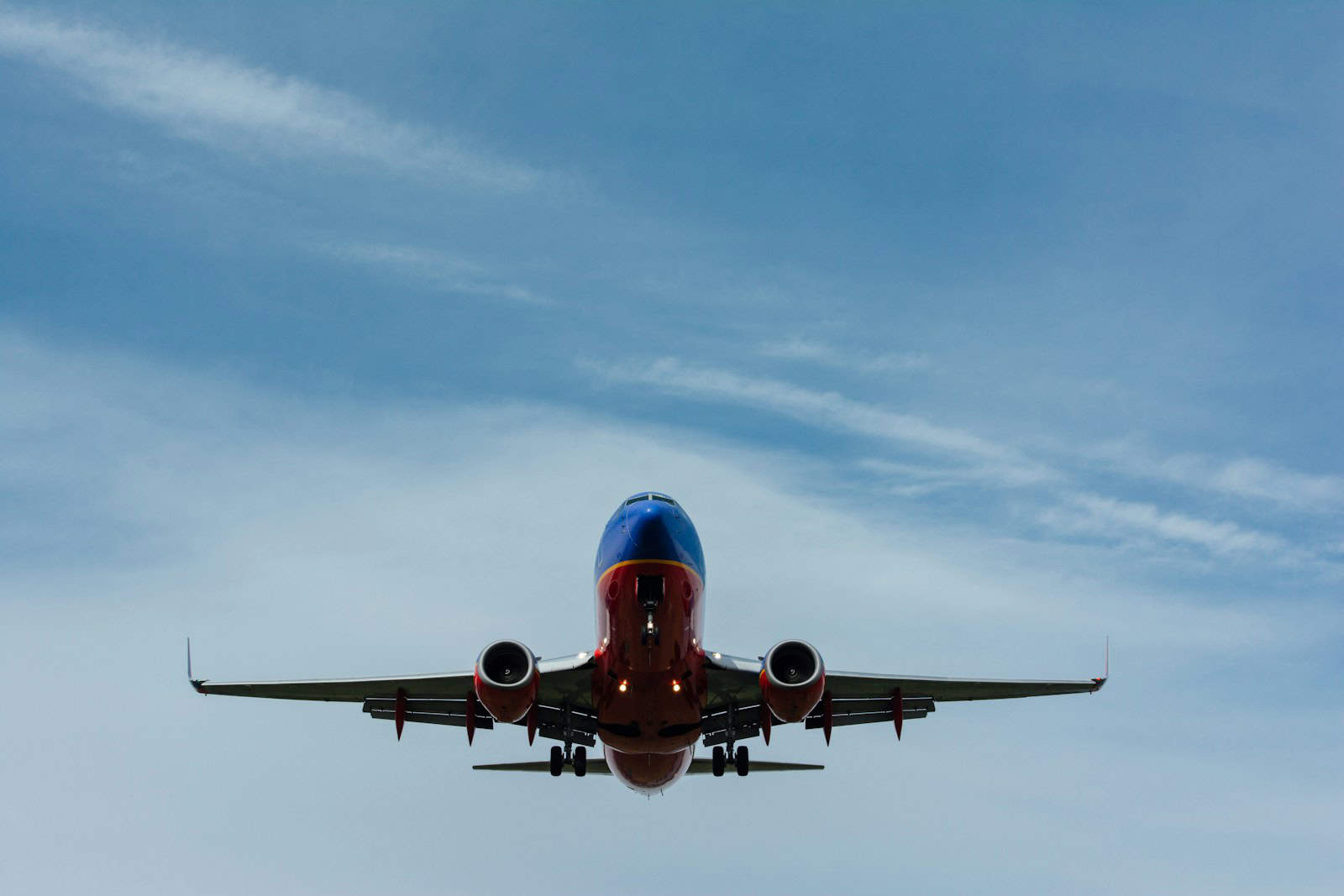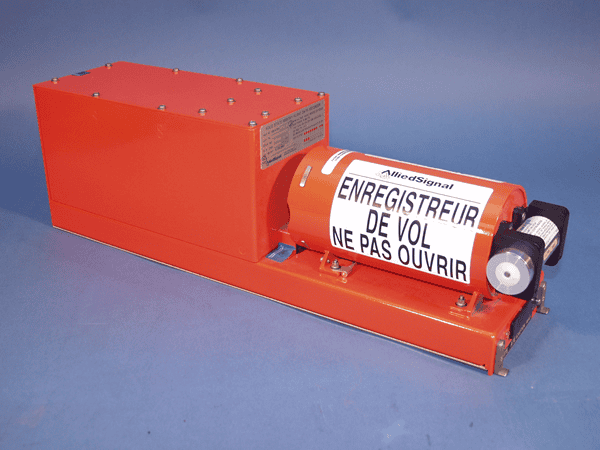
Black boxes, crucial components in aircraft accident investigations, can sometimes stop recording before a crash occurs. This unexpected failure raises concerns about the reliability of these devices and the impact on air safety investigations. The most common reasons for black boxes to stop recording include mechanical failures, electrical issues, or damage from the impact of a crash.
A recent example highlights this problem. In December 2024, a Jeju Air Boeing 737-800 crashed in South Korea, killing 179 people. Investigators discovered that the black boxes stopped recording about four minutes before the accident. This loss of critical data complicates efforts to determine the cause of the crash and prevent similar incidents in the future.
Black boxes are designed to withstand extreme conditions, but they are not infallible. Power loss, circuit damage, or sensor malfunctions can interrupt the recording process. In some cases, the force of impact during a crash may cause the devices to stop functioning prematurely. Understanding these vulnerabilities is essential for improving black box technology and enhancing aviation safety.

Why a Black Box Might Stop Recording
Power Failure
The most common reason for a black box to stop recording is a complete loss of electrical power. This can occur due to various reasons, such as:
- Engine Failure: If both engines fail, the primary source of electrical power is lost.
- Severe Damage to the Aircraft: Extensive damage to the aircraft’s electrical system in an accident can disrupt power to the black box.
- Battery Failure: Although black boxes have backup batteries, these batteries have a limited lifespan and may fail in certain situations.
System Malfunction
While rare, a malfunction within the black box itself can lead to recording failure. This could be due to:
- Internal Component Failure: A critical component within the recorder may malfunction, preventing it from operating correctly.
- Software Error: A software glitch or error could disrupt the recording process.
- Data Overload: In extremely rare cases, an overwhelming amount of data might exceed the recorder’s capacity, leading to a stoppage.
External Factors
In some instances, external factors can contribute to a black box stopping recording:
- Extreme Temperatures: Exposure to extremely high or low temperatures can damage the recorder’s internal components.
- Water Damage: If the black box is submerged in water for an extended period, it may suffer irreparable damage.
- Physical Damage: A severe impact or crushing force can destroy the recorder, preventing it from functioning.
The Importance of Redundancy
To mitigate the risk of data loss, modern aircraft often have multiple black boxes with redundant systems. This ensures that even if one recorder fails, there’s a higher chance of recovering critical flight data.
Understanding the “Black Box”
The term “black box” is a bit of a misnomer. These devices are actually bright orange to aid in their recovery after an incident. They consist of two primary components:
- Flight Data Recorder (FDR): This records various flight parameters, such as altitude, airspeed, heading, and engine performance.
- Cockpit Voice Recorder (CVR): This captures audio from the cockpit, including conversations between pilots, air traffic control communications, and ambient sounds.
These recorders play a crucial role in aircraft accident investigations, providing valuable insights into the events leading up to an incident.
Key Takeaways
- Black boxes can fail due to mechanical, electrical, or impact-related issues
- The Jeju Air crash in 2024 exemplifies the challenges of incomplete flight data
- Improving black box technology is crucial for enhancing aviation safety investigations
Fundamentals of Black Box Operation
Black boxes are crucial components in aircraft safety and accident investigation. These devices record essential flight data and cockpit audio, providing invaluable information for analyzing incidents and improving aviation safety.
Design and Durability of Black Boxes
Black boxes, also known as flight recorders, are built to withstand extreme conditions. They are typically bright orange for easy visibility and housed in hardened steel or titanium shells. These devices can survive impacts of up to 3,400 Gs and temperatures up to 2,000°F for short periods.
The interior components are protected by layers of insulation and heat-resistant materials. Black boxes are required to function in depths up to 20,000 feet underwater for at least 30 days. They are equipped with underwater locator beacons that emit pings for up to 90 days to aid in recovery efforts.
Data Captured by Flight Recorders
Modern aircraft carry two types of black boxes: the Flight Data Recorder (FDR) and the Cockpit Voice Recorder (CVR). The FDR records technical flight data, including:
- Airspeed
- Altitude
- Engine performance
- Control surface positions
- Flight path
FDRs can record over 1,000 parameters, capturing data every few seconds. The CVR records audio from cockpit microphones, typically storing the last 2 hours of conversation. This includes:
- Pilot communications
- Air traffic control interactions
- Cockpit sounds
Together, these devices provide a comprehensive picture of an aircraft’s final moments, aiding investigators in determining the cause of incidents and improving future flight safety.
Common Causes for Recording Failures
Black boxes can stop recording due to various issues. These range from internal mechanical problems to external factors and power-related failures.
Mechanical Failures and Malfunctions
Mechanical issues often cause recording failures in black boxes. Worn-out components, like tape drives or storage devices, can malfunction. Loose connections within the device may disrupt data flow. Heat damage from prolonged use can also degrade internal parts.
Vibrations during flight can dislodge components or cause short circuits. Manufacturing defects, though rare, can lead to premature failure. Regular maintenance helps prevent these issues, but unexpected breakdowns still occur.
External Factors Leading to Shutdown
Environmental factors play a significant role in black box failures. Extreme temperatures can affect electronic components. High altitude pressure changes may cause malfunctions. Moisture ingress can short-circuit sensitive equipment.
Bird strikes can damage external sensors, disrupting data input. Severe turbulence might knock systems offline. Lightning strikes pose a serious threat to electrical systems. Electromagnetic interference from other aircraft systems can also disrupt recording functions.
Power Issues and Electrical Failures
Power-related problems frequently cause black box shutdowns. Battery failures in older models can lead to data loss. Short circuits may cut power supply abruptly. Faulty wiring can cause intermittent power issues.
Overloading of aircraft electrical systems during emergencies can affect black box power. Software glitches might trigger unexpected shutdowns. Power surges from lightning strikes can overwhelm protective circuits. In rare cases, deliberate power cuts during hijackings or other security threats may stop recordings.
Case Studies and Analysis
Recent incidents have highlighted critical issues with black box failures in aviation. These cases provide valuable insights into potential causes and expert perspectives on improving flight recorder reliability.
Incident Reviews Involving Black Box Failures
The December 29, 2024 crash of Jeju Air Flight 7C 2216 in South Korea revealed a concerning black box malfunction. Investigators found that both flight recorders stopped working about 4 minutes before the Boeing 737-800 crashed at Muan International Airport. This unexplained failure has complicated efforts to determine the cause of the accident that killed 179 people.
In similar cases, black boxes have been damaged by impact, fire, or prolonged water exposure. However, the Jeju Air incident is unusual as the devices failed before the crash occurred. This has prompted a deeper examination of flight recorder reliability and potential vulnerabilities.
Contributions from Aviation Experts
Aviation specialists are analyzing the Jeju Air crash to identify potential factors behind the black box failure. Some experts suggest electrical system malfunctions or software glitches as possible causes. Others point to the need for more robust flight recorder designs that can withstand extreme conditions.
The U.S. National Transportation Safety Board (NTSB) is collaborating with South Korean investigators to examine the recovered devices. Their findings may lead to new recommendations for improving black box technology and maintenance procedures. This incident has also sparked discussions about implementing redundant recording systems to ensure critical flight data is preserved in future accidents.
Implications for Aviation Safety and Procedures
Black box failures can significantly impact aviation safety and procedural improvements. When these critical devices stop recording, it hinders investigations and potentially compromises future safety measures.
Enhancing Airport Infrastructure
Airports play a crucial role in ensuring flight safety. The Korean transport ministry is evaluating airport infrastructure after recent incidents. Improved runway designs can reduce risks during emergency landings. Enhanced lighting systems help pilots navigate in low visibility conditions.
Upgraded communication systems enable better coordination between air traffic control and pilots. This is especially important during go-around procedures. Reinforced concrete embankments near runways provide added protection in case of overshoots.
Advancements in Black Box Technology
Manufacturers are developing more robust black boxes to withstand severe crashes. New models feature extended battery life and increased data storage capacity. This allows for longer recording times and more comprehensive flight data.
Improved underwater locator beacons help recovery teams find black boxes in marine accidents. Some newer designs incorporate real-time data streaming to ground stations. This ensures crucial information is available even if the physical device is lost.
Researchers are exploring ways to make black boxes more resistant to electrical failures. These advancements aim to reduce instances of premature recording stops during critical flight phases.
Frequently Asked Questions
Flight recorders, commonly known as black boxes, are critical for understanding aviation incidents. These devices can sometimes encounter issues that affect their functionality and data recording capabilities.
What could cause an aviation flight recorder to cease functioning?
Power failure is a common reason for flight recorder malfunction. If the aircraft experiences electrical system problems, the black box may lose power and stop recording. Damage from severe impacts or extreme temperatures can also cause the device to fail.
Are there circumstances under which a flight data recorder might fail during an accident?
Yes, flight data recorders can fail during accidents. Extreme forces during a crash may damage internal components. Fire or prolonged exposure to high temperatures can also render the device inoperable, preventing it from recording crucial final moments.
Is it possible for external factors to interfere with black box recordings?
External electromagnetic interference can potentially disrupt black box recordings. Strong radio signals or lightning strikes might temporarily affect the device’s ability to record data accurately. Physical obstructions or damage to antennas can also impact recording quality.
What are the limitations of a cockpit voice recorder’s durability in extreme conditions?
Cockpit voice recorders are designed to withstand extreme conditions, but they have limits. Prolonged exposure to intense heat exceeding their rated temperature threshold can cause failure. Submersion in deep water for extended periods may also compromise the device’s integrity.
How do manufacturers ensure the resilience of black boxes in case of an incident?
Manufacturers use robust materials like titanium and stainless steel for black box casings. They subject devices to rigorous tests simulating crashes, fires, and deep-sea pressures. Shock-absorbing mounts and thermal insulation further enhance resilience against impacts and extreme temperatures.
Can the data retrieval process from a flight recorder ever be compromised?
Data retrieval can be compromised in certain situations. Severe physical damage to the memory unit may make data unreadable. Corrosion from prolonged saltwater exposure can also affect data integrity. In rare cases, encryption issues or file corruption might hinder successful data extraction.






